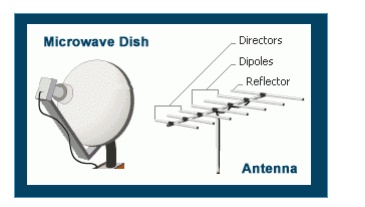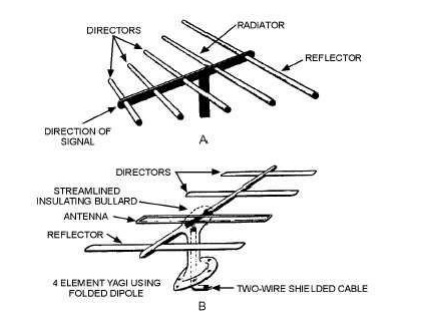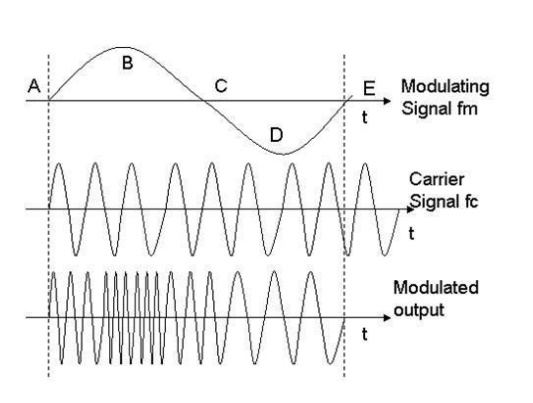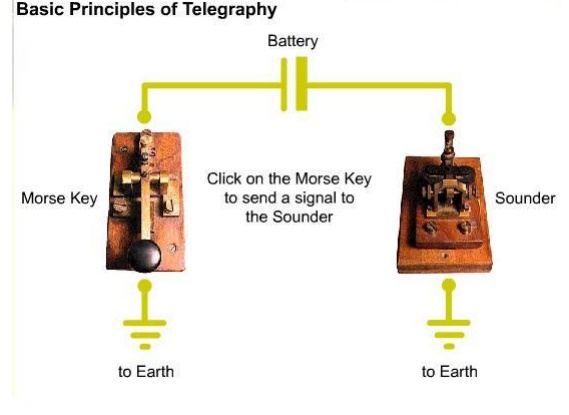Chapter: Basic Electrical and Electronics Engineering : Fundamentals of Communication Engineering
Fundamentals of Communication Engineering
FUNDAMENTALS OF COMMUNICATION ENGINEERING
Networks:
Symmetrical
and asymmetrical networks. characteristic impedance and propagation constant
Derivation of characteristic impedance for T and Pi networks using Zoc and Zsc,
image and iterative impedances - Derivation of Zi1 and Z i2 for asymmetrical T
and L networks using Zoc and Zsc, Derivation of iterative impedances for
asymmetrical T network. Equaliser: types, applications: constant resistance
equalizer. ( No derivations)
Symmetrical Networks:
A network
in which all devices can send and receive data at the same rates. Symmetric
networks support more bandwidth in one direction as compared to the other, and
symmetric DSL offers clients the same bandwidth for both downloads and uploads.
A lesser used definition for symmetric network involves resource access—in
particular, the equal sharing of resource access.
Antenna:
Basic
antenna principle, directive gain, directivity, radiation pattern, broad-side
and end -fire array, Yagi antenna, Parabolic antenna.
Antenna Directivity:
Directivity
is an important quality of an antenna. It describes how well an antenna
concentrates, or bunches, radio waves in a given direction. A dipole transmits
or receives most of its energy at right angles to the lengths of metal, while
little energy is transferred along them.
If the
dipole is mounted vertically, as is common, it will radiate waves away from the
center of the antenna in all directions. However, for a commercial radio or
television station, a transmitting antenna is often designed to concentrate the
radiated energy in certain directions and suppress it in others.
For
instance, several dipoles can be used together if placed close to one another.
Such an arrangement is called a multiple-element antenna, which is also known
as an array.
By
properly arranging the separate elements and by properly feeding signals to the
elements, the broadcast waves can be more efficiently concentrated toward an
intended audience, without, for example, wasting broadcast signals over
uninhabited areas.
Basic Antenna principle:
Antenna:
Antenna,
also referred to as an aerial, device used to radiate and receive radio waves
through the air or through space. Antennas are used to send radio waves to distant
sites and to receive radio waves from distant sources. Many wireless
communications devices, such as radios, broadcast television sets, radar, and
cellular radio telephones, use antennas. Receiving antennas come in many
different shapes, depending on the frequency and wavelength of the intended
signal.
How Antenna works?

A
transmitting antenna takes waves that are generated by electrical signals
inside a device such as a radio and converts them to waves that travel in an
open space. The waves that are generated by the electrical signals inside
radios and other devices are known as guided waves, since they travel through
transmission lines such as wires or cables.
The waves
that travel in an open space are usually referred to as free-space waves, since
they travel through the air or outer space without the need for a transmission
line. A receiving antenna takes free-space waves and converts them to guided
waves.
Radio
waves are a type of electromagnetic radiation, a form of rapidly changing, or
oscillating, energy. Radio waves have two related properties known as frequency and
wavelength.
Frequency refers to the number of times per
second that a wave oscillates, or varies in
strength.
The wavelength is equal to the speed of a wave
(the speed of light, or 300 million m/sec)
divided by the frequency. Low-frequency radio waves have long wavelengths
(measured in hundreds of meters), whereas high-frequency radio waves have short
wavelengths (measured in centimeters).
An antenna can radiate radio waves into free space
from a transmitter, or it can receive radio waves and guide them to a receiver,
where they are reconstructed into the original message. For example, in sending
an AM radio transmission, the radio first generates a carrier wave of energy at a particular frequency. The carrier wave is
modified to carry a message, such as
music or
a person's voice.
The
modified radio waves then travel along a transmission line within the radio,
such as a wire or cable, to the antenna. The transmission line is often known
as a feed element. When the waves reach the antenna, they oscillate along the
length of the antenna and back. Each oscillation pushes electromagnetic energy
from the antenna, emitting the energy through free space as radio waves.
The
antenna on a radio receiver behaves in much the same way. As radio waves
traveling through free space reach the receiver's antenna, they set up, or
induce, a weak electric current within the antenna. The current pushes the
oscillating energy of the radio waves along the antenna, which is connected to
the radio receiver by a transmission line. The radio receiver amplifies the
radio waves and sends them to a loudspeaker, reproducing the original message.
Yagi antenna:
The Yagi
antenna or more correctly, the Yagi - Uda antenna was developed by Japanese
scientists in the 1930's. It consists of a half wave dipole (sometimes a folded
one, sometimes not), a rear "reflector" and may or may not have one
or more forward "directors". These are collectively referred to as
the "elements".

The Yagi
antenna consists of 2 parts:
the antenna elements the antenna boom
There are three types of elements:
the Reflector (REFL)
the Driven Element (DE)
the Directors (DIR)
Each Yagi
antenna consists of dipoles, reflectors and directors. A dipole antenna
receives radio frequency energy in a circular field ending at the center of the
dipole. The Yagi antenna uses a series of dipoles in order to allow for a wider
range of single to reach the antenna.
With a
Yagi antenna all parts of the antenna usually lay on the same plane. This can
be extremely useful, especially with more modern Yagi antennas. The more
dipoles that the Yagi antenna has on the same plane, the more bands of signal
it can pick up at the same time
The
Reflector is at the back of the antenna furthest away from the transmitting
station. In other words the boom of the antenna is pointed towards the radio
station over the horizon with the Reflector furthest away from the station.
The
Driven Element is where the signal is intercepted by the receiving equipment
and has the cable attached that takes the received signal to the receiver.
Amplitude Modulation:
MODULATION/DEMODULATION:
Modulation
is the process of varying some characteristic of a periodic wave with an
external signals. Modul- ation is the modifying of a signal to carry
intelligent data over the communications channel. Several types of modulation
are available, depending on the system requirement and equipment. The most
frequently used types of modulation are amplitude modulation, frequency
modulation, and phase modulation.
Demodulation
is the act of returning modulated data signals to their original form.
1.
Amplitude modulation(AM):
Amplitude
modulation refers to modifying the amplitude of a sine wave to store data.
2.
Frequency Modulation (FM):
Frequency
modulation refers to changing the frequency of a signal to indicate a logic 1
or a logic 0. One frequency indicates a logic 1, and the other frequency
indicates a logic 0.
3.
Phase Modulation (PM or Indirect FM):
Phase
modulation is more complex than amplitude modulation or frequency modulation.
Phase modulation uses a signal frequency sine wave and performs phase shifts of
the sine wave to store data. A modification of phase modulation involves the
use of several discrete phase shifts to indicate the state of two or more data
bits.
Frequency Modulation:
Frequency
Modulation (FM) With frequency modulation, the modulating signal and the
carrier are combined in such a way that causes the carrier FREQUENCY(fc) to
vary above and below its normal(idling) frequency. The amplitude of the carrier
remains constant as shown in figure below.

Microphones:
Introduction:
A
microphone is a transducer as it converts sound waves (acoustic energy) into
electrical energy. The very first microphone was purely mechanical in nature. A
metal diaphragm is connected to a needle, which ―draws‖ a pattern on a metallic
foil. When the air pressure changes due to a person‘s voice, the diaphragm
vibrates and moves the needle. The needle then scratches the foil with the
vibration pattern. The sound is recreated when the needle is made to run over
the foil again. The vibration pattern being followed by the needle makes the
diaphragm move and reproduces the sound.
Microphones
now work the same way but does the process electronically. Instead of a
scratched foil with the vibration patterns, the change in air pressure is now
converted to an electrical signal. The diaphragms can be of any material such
as plastic, paper or aluminum. Diaphragms differ in producing sound which gave
rise to different classifications of microphones
Types of microphones:
Carbon microphones:
Carbon
microphones are amongst the oldest, simplest and most used types of microphones
even to this day. They work by converting air pressure variations into
electrical resistance. The membrane collecting the sound waves presses against
a carbon dust material that varies its electrical resistance in the process. By
running electric current through the carbon dust, one can obtain an electrical
current variation that is amplified and recorded.
Condenser Micorphones:
Condenser
microphones rely on the properties of capacitors. However, the plates of the
capacitor are no longer immobile and are free to move in relation to each other
according to the air pressure changes. This generates a variation in the
capacity of the device, which can be converted into electric signals.
Dynamic microphones:
Dynamic
microphones on the other hand harness the electromagnetic effects determined by
the movement of a magnet inside a conductive wire coil. The vibrations of the
magnet are basically converted into tiny electrical currents that are amplified
and recorded.
Ribbon microphones:
Ribbon
microphones work on a principle rather similar to that of the dynamic
microphones, but instead of vibrating a microphone inside a coil, a thin ribbon
is suspended in a magnetic field. The vibration of the ribbon translates into
inductance variations inside the coil generating the magnetic field.
Piezo-electric microphones:
Crystal
microphones are based on the piezoelectric effect. Piezoelectric materials have
the ability of directly converting electric energy into mechanical movement and
vice versa. The most common piezoelectric material occurring naturally on Earth
is quartz, which is often used to make crystal microphones.
Telegraphy
Telegraphy
is the long-distance transmission of written messages without physical
transport of letters. Radiotelegraphy
or wireless telegraphy transmits
messages using radio. Telegraphy includes recent forms of data transmission
such as fax, email, and computer networks in general.
A telegraph is a machine for transmitting
and receiving messages over long distances. A telegraph message sent by a
telegraph operator (or telegrapher) using Morse code was known as a telegram or cablegram, often shortened to a cable
or a wire message. Later, a telegram
sent by the Telex network, a switched network of teleprinters similar to the
telephone network, was known as a telex
message.

Morse Code:
Morse
code is a type of character encoding that transmits telegraphic information
using rhythm. Morse code uses a standardized sequence of short and long
elements to represent the letters, numerals, punctuation and special characters
of a given message. The short and long elements can be formed by sounds, marks,
or pulses, in on off keying and are commonly known as "dots" and
"dashes" or "dits" and "dahs". The spee d of
Morse code is measured in words per minute or characters per minute , while
fixed-length data forms of telecommunication transmission are usually measured
in baud or bps.
Television:
Television
(TV) is a widely used telecommunication medium for transmitting and receiving
moving images, either monochromatic ("black and white") or color,
usually accompanied by sound. "Television" may also refer specifically
to a television set, television programming or television transmission.

Charge-Coupled Device
Charge-coupled
device (CCD) is an analog shift register that enables the transportation of
analog signals (electric charges) through successive stages (capacitors),
controlled by a clock signal. Charge-coupled devices can be used as a form of
memory or for delaying samples of analog signals. Today, they are most widely
used in arrays of photoelectric light sensors to serialize parallel analog
signals. Not all image sensors use CCD technology; for example, CMOS chips are
also commercially available.
"CCD"
refers to the way that the image signal is read out from the chip. Under the
control of an external circuit, each capacitor can transfer its electric charge
to one or another of its neighbors. CCDs are used in digital photography,
digital photogrammetry, astronomy (particularly in photometry), sensors,
electron microscopy, medical fluoroscopy, optical and UV spectroscopy, and high
speed techniques such as lucky imaging.
Television
is certainly one of the most influential forces of our time. Through the device
called a television set or TV, you are able to receive news, sports,
entertainment, information and commercials. The average American spends between
two and five hours a day glued to "the tube"!
Have you
ever wondered about the technology that makes television possible? How is it
that dozens or hundreds of channels of full-motion video arrive at your house,
in many cases for free? How does your television decode the signals to produce
the picture? How will the new digital television signals change things? If you
have ever wondered about your television (or, for that matter, about your
computer monitor), then read on! In this article, we'll answer all of these
questions and more. See the next page to get started.
conversion
of the vibrations of sound (for example, music) into a permanent record, and
its later playback in its original form (see SOUND,). In the most common method
of sound recording, the magnetic method, transformed sound waves may be
amplified and made to magnetize a metaloxide coated plastic recording tape so
that the magnetization varies with the frequency and intensity of the sound.
Sound recording involves some form of mechanical movement of the recording
medium at a constant speed past the point of recording so that the sound
recording may later be reproduced as a replica of the original sound.
Components of Television
HIGH FIDELITY
High
fidelity is the technique of recording, broadcasting, and reproducing sound to
match as closely as possible the characteristics of the original sound. To
achieve high-fidelity reproduction, the sound must be free of distortion and
include the full frequency range of human hearing—20 Hz to 20 kilohertz (see FREQUENCY,).
Components.
A
high-fidelity system consists of the following components: the turntable and
tonearm or possibly a CD player, the amplifier, the speaker system, and the
control unit, sometimes referred to as a preamplifier/control unit.
Supplementary components include the tuner and the tape recorder.
The turntable and tonearm.
(For the
basic operating principles of these elements, see PHONOGRAPH,.) The turntable and tonearm translate the engraved
patterns on a phonograph record into electrical voltage variations. The
turntable is rotated by a motor that turns at a constant speed, thus avoiding
distortions called wow and rumble. Wow consists of a slow variation in pitch
caused by variation in the speed of the turntable, and rumble is a
low-frequency tremor caused by defects in the turntable.
The
tonearm and the cartridge form one of the most critical parts of the high-fidelity
installation. The finely balanced tonearm holds a cartridge, which in turn
holds a stylus, preferably tipped with long-wearing diamond. To reproduce
recorded sound accurately and with minimum wear on the record, the cartridge
must provide maximum compliance, that is, an easy lateral and vertical motion
of the stylus. The stylus, moreover, must contact the record at a precise angle
with the proper pressure.
The compact disc (CD) player.
CD
players are increasingly replacing the conventional turntable and tonearm in
high-fidelity systems. Offering more uniform frequency response, lower
distortion, and inaudible background noise levels, compact discs have the
additional advantage of longer life. Since CDs are never physically in contact
with any pickup mechanism—digital codes embedded beneath the surface of the
disc are read by a laser beam of light—these discs can last indefinitely if
handled with care. Specially built CD players can also be used for data
retrieval using CD-ROM (Read-Only Memory) discs, while interactive compact
discs (CD-I), as well as interactive video discs (VD-I), can be used for a wide
variety of educational and training purposes. In addition to their audio
content, some CDs contain digitally driven graphics that can be displayed on a
television screen. Such discs are referred to as CD-G.
The amplifier.
The
amplifier converts the relatively weak electrical impulses received from the
cartridge into power sufficient to drive the speakers. The amount of power that
an amplifier can produce is rated in watts. Depending on the requirements of
the speaker system, an amplifier may deliver from 10 to 125 watts of electrical
power. The amplifier is controlled, as a rule, by a device called the
preamplifier, which amplifies minute sound-signal voltages too small for the
amplifier to handle. Preamplifiers also boost the bass and attenuate the treble
to compensate for the poor bass and strong treble response of phonograph records.
Most modern amplifiers are equipped with so-called
solid-state or integrated circuits. See
INTEGRATED
CIRCUIT.
The speaker system.
Loudspeakers,
electromechanical devices that produce audible sound from amplified audio
voltages, are extensively employed in radio receivers, motion picture sound
systems, public-address systems, and other apparatus in which sound must be
produced from a recording, a communications system, or a sound source of low
intensity.
Several
types of loudspeaker exist, but almost all loudspeakers now in use are dynamic
speakers. These speakers include an extremely light coil of wire, called the
voice coil, mounted within the magnetic field of a powerful permanent magnet or
electromagnet. The coil of the electromagnet, if one is used, is called the
field coil. A varying electric current from the amplifier passes through the
voice coil and alters the magnetic force between the voice coil and the
speaker‘s magnetic field. As a result, the coil vibrates with the changes in
the current. A diaphragm or a large paper cone mechanically attached to the
voice coil generates sound waves in the air when the coil moves.
The
loudness and sound quality of such speakers can be increased by the use of
properly designed enclosures or cabinets. Such cabinets may hold several
loudspeakers of different sizes, small so-called tweeters for high notes, and
large woofers for low notes.
The control unit.
As the
nerve center of the high-fidelity system, the control unit performs a number of
critical functions. For example, the surface noises of old records are
attenuated by means of a device called the scratch filter; another device, the
rumble filter, cuts down low-pitched noises, such as vibration from the
phonograph motor; the loudness control compensates for the inability of the ear
to hear high and low notes as clearly as it hears the middle range by
increasing the relative level of treble and bass tones when the record is
played at a reduced volume. The control unit also adjusts sound signals from
the record player, the tape recorder, or the tuner.
The tuner.
The AM/FM
tuner allows the listener to receive broadcasts from stations in the broadest
band of the radio spectrum, from 500 to 1650 kilohertz (AM), 88 to 108
megahertz (FM). From the broadcast signals reaching the antenna, the tuner
selects the frequency of the desired station to the exclusion of other stations
in the broadcast range. It then extracts the audio voltage representing the
program being transmitted and amplifies this voltage to activate the speakers
of the high-fidelity system. See
RADIO,.
The tape recorder.
This
device records and reproduces sound by preserving electrical signals as
magnetic patterns on thin plastic tape coated with magnetic oxide. In
recording, the tape is drawn past a recording head, leaving a magnetic imprint.
The tape is then drawn past a reproducing head that turns the magnetic pattern
into an electrical signal; this signal, in turn, is amplified and reproduced as
sound. The reproducing, or playback, head may be the same device as the
recording head, or they may be separate devices. Tapes are readily erased for
reuse and are virtually immune to the damage that eventually mars phonograph
records.
The first
magnetic-reading instrument, called a telegraphone, was invented in 1898 by the
Danish electrical engineer Valdemar Poulsen (1869–1942), who used a magnetized
steel tape to carry messages. Currently, the most popular form of tape
recording is the so-called compact cassette, which uses a tape with two or four
tracks. Cassette-tape recorders and players are available in a wide variety of
sizes, from the tiny portable types used with stereo headphones to elaborate
units incorporated in home high-fidelity systems.
STEREOPHONIC SOUND
Stereophonic
sound re-creates for listeners the conditions that would exist near an actual
sound source, such as an orchestra. The sound is picked up separately from the
left and the right sides of the orchestra, and, through the use of two or more
carefully placed speakers, a stereophonic recording is directed toward
listeners in such a way that they seem to hear music from the left, the right,
and the center. More importantly, they become aware of a veil of sound that
seems to have depth and solidity as well as direction.
TYPES OF
RECORDING:
Mechanical Recording.
The
operation of a sound-recording system may, however, be most easily understood
by considering the process of recording sound by the now obsolete mechanical
method. In this method, sound waves are used directly or indirectly to actuate
a stylus or cutter that engraves on a disk or cylinder a wavy-line pattern
corresponding to the pattern of sound waves. This process, with minor
modifications, was used for many years in the production of phonograph records.
In the direct method of mechanical recording, sound waves strike a very light
diaphragm of metal or other substance and set it into motion. Attached to the
diaphragm is a needle or cutting point that vibrates with the diaphragm. Under
the point is a disk or cylinder of wax, metallic foil, shellac, or other
suitable substance that is moved past the needle so that the needle cuts a
groove in the form of a spiral on a disk, or a helix on a cylinder. As the
needle vibrates it traces a wavy groove laterally or vertically in the record;
this groove is a mechanical replica of the sound that struck the diaphragm of
the recording machine. If, for example, the sound wave consists of the musical
tone of A in the treble clef, which has a frequency of 440 Hz (hertz or cycles
per second), the needle oscillates 440 times/sec. If the record is moving under
the needle at the rate of 10 cm/sec, the groove will exhibit a pattern of 44
oscillations (44 sine waves, or 44 crests and 44 troughs)/1 cm (0.4 in). To
reproduce the recorded sound, a needle attached to a diaphragm is set in the
groove, and the record is turned at the rate of 10 cm (4 in)/sec. The vertical
or, more commonly, lateral crests and troughs of groove
then move the needle at the rate of 440 oscillations/sec, and the attached
diaphragm
oscillates, producing sound waves in the air of the same pitch as the original
tone (see OSCILLATION,). In the
making of modern phonograph records the sound is first converted to electrical
impulses by a microphone; these impulses are amplified and used to actuate the
cutting needle by electromagnetic means. The cutting needle engraves a disk,
called the master, made of shellac, which is used to make the metal molds from
which vinyl records are mass produced.
Optical Recording.
In the
optical method, sound waves are transformed by a microphone into equivalent
electrical impulses that are then amplified and made to operate a device that
changes the intensity of a light beam (by means of an electromagnetically
actuated gate or light valve) or the size of the beam (by means of an electromagnetically
actuated vibrating mirror or a slit of variable width). The resulting varying
light beam is focused on a moving film, which is then developed to provide a
photographic track. The track recorded with varying intensity is of variable
density and constant width. The track recorded with the vibrating mirror or
varying slit has variable areas of darkened and clear film. To reproduce the
sound track on either film, a light source is focused on the film, and a
PHOTOELECTRIC CELL, (q.v.) is placed behind the film. The fluctuations in the
relative amount of light passing through the film generate a fluctuating
electric current in the photoelectric cell; this current is amplified and then
transformed into sound by means of some form of loudspeaker. See MOTION PICTURE,.
Electromagnetic Recording.
In
audiotape recording, sound waves are amplified and recorded on a magnetized
plastic or paper tape. The information is first converted into electrical
impulses, which are then impressed in the magnetized tape by an electromagnetic
record head. A playback head, which is also an electromagnetic device, converts
the magnetic fields on the tape into electrical impulses that are then
amplified and reconverted into audible sound waves.
Digital Recording.
In the combined
mechanical and electronic system of ordinary phonograph recording, waveforms of
sound are inevitably distorted to some degree, and they also pick up noises
from the recording process itself. In computer-based recording these problems
are eliminated. The digital recorder measures the waveforms thousands of times
each second and assigns a numerical value, or digit, to each of the
measurements. These digits are then translated into a stream of electronic
pulses that are placed in a memory bank for later retranslation and playback.
Such techniques have been used limitedly in recent years for the production of
otherwise conventional phonograph records, but direct-digital records are now
available in which electronic pulses are instead placed on a small, aluminized
disc called a COMPACT DISC (q.v.; CD), where they somewhat resemble a spiral of
Morse-code signals when viewed through a microscope. The plastic-protected CD
is placed in a machine where a laser beam reads the coded information, and
circuitry converts it to analog signals for playback through conventional
speaker systems.
Stereophonic Recording.
Stereophonic
recording in its simplest form uses two separate microphones to produce two
recorded tracks, or channels, on magnetic tape. Similarly, the sound component
of motion pictures reproduces stereophonic sound by multiple tracks on film.
Phonograph
disks can also record stereophonic sound, or stereo, on two independent
channels, one on each wall of a single groove. The groove is cut with a 90° stylus
in such a way that one groove wall slants 45° to the left, and the other wall
slants 45° to the right. Two independent coils 90° apart energize the cutting
stylus to give a different pattern on each wall for each of the two channels.
During playback of a disk, two sensors in the cartridge are mounted at a 90°
angle to each other to pick up the two tracks.
Quadraphonic Recording.
A
quadraphonic sound playback system requires the use of four separate
amplification channels driving four speakers located in the four corners of the
listening room. Various systems achieving quadraphonic recording and playback
were perfected in the early 1970s, some involving a method of encoding and
decoding which required only two channels to be recorded on tape or disk.
The lack
of standardization of these systems and the reluctance of many music lovers to
place four loudspeakers in the listening room caused the popularity of
quadraphonic recording to wane. With the advent of home video recorders, or
VCRs, and large-screen television sets in the 1980s, a new type of
multi-channel sound has replaced quadraphonic sound. Called surround sound,
this system also involves the use of four or more loudspeakers and channels and
is used to re-create the all-enveloping sound experienced when attending
certain motion pictures in specially equipped theaters.
Related Topics